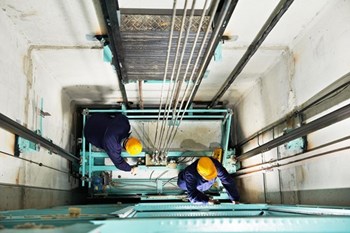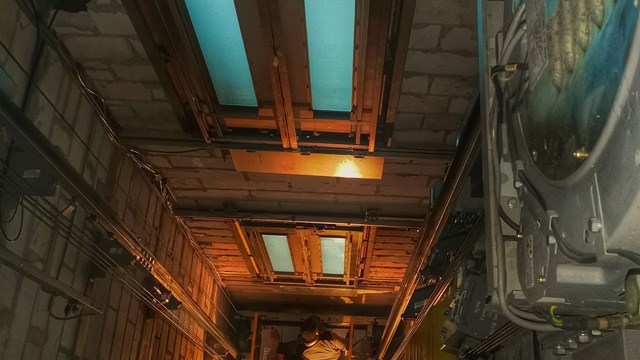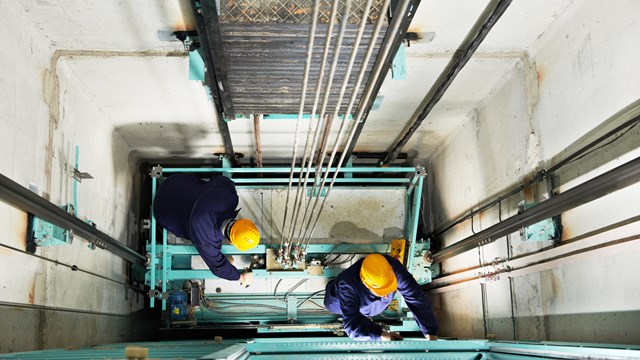
No matter how well-constructed and carefully maintained, no mechanical system lasts forever – and that goes for elevator cabs and equipment just as much as it applies to roofs or boilers. At some point, your building’s vertical transportation comes to the end of its useful life, and the inconvenience of refurbishment and replacement becomes a reality for residents. If you live on a lower floor – say the first, second, or even the third story – the inconvenience may not be too severe. If you live in a building with multiple elevators, it’s unlikely that more than one will be taken out of service for upgrading at a time. But if you live in a building with a single elevator and reside above the first few floors, or if you have trouble climbing stairs at all, let alone carrying packages up or down, an elevator upgrade can become a real nightmare.
“Single elevator buildings are a challenge,” says Joe Caracoppa, an elevator consultant with Sierra Consulting Group, a New York City-based elevator consulting firm. “The question is how do you get the people up and down for six to eight weeks while the work is being done and completed? [The answer] is usually walking up and down. When the elevator is out, it’s out. It can’t be used temporarily.” On the other hand, Caracoppa continues, “Multi-elevator buildings are easy. You always have another car, a freight car or the other passenger elevator. But if it’s just a single elevator, well, no one can use the elevator during the process, and it must be tested by the city before it can be put back into operation.”
Planning for the Inevitable
Jacqueline Duggin is a building manager with Gumley-Haft, a Manhattan-based residential property management firm. She manages a seven-story, single-elevator building on Manhattan’s East Side that recently underwent a total refurbishment. The property was built at the turn of the twentieth century, and so is over 100 years old. The single elevator required modernization and refurbishing. “The board really had to think a lot about the project, and about this problem,” Duggin says. “We had people in the building, one family in particular, where someone was disabled and used a wheelchair. There was no way this resident could go up and down the stairs. Another resident had two very large dogs, and they couldn’t go up and down numerous times a day either. There was no way we could accommodate them. In the end, the board did arrange to do the work during the summer months when many people were away on vacation. The resident with the dogs had a summer home and went there for the duration of the project. The disabled resident stayed with a family member elsewhere. For other residents who were able to go up and down the stairs, we accommodated them by hiring extra staff to help people with their groceries, luggage, etc. We placed chairs on each landing and provided cold bottles of water for anyone who was tired or overheated.”
Eveline Smythe is an executive manager with AKAM Management, the managing agent for The Tides in Hollywood Beach, Florida. The logistics employed for an elevator project at The Tides – two 15-story buildings located on the beach – was completely different, explains Smythe. “Communications is the key,” she says. “Many of our owners are internationally based, in South America and Canada. Much of our communications were done through email blasts. The first thing we did was discuss the project with the residents at several meetings. Then we set up communications by email with notice as to how the project would progress. We let people prepare for the project.”
Since each building has multiple elevators, at no time was anyone stranded. They did make some changes to regular procedures though: “When we did the service elevators, we had to halt all move-ins and move-outs and all major deliveries,” says Smythe. “You could still have small packages or food delivered, and we had a security officer in each lobby to facilitate the efficient use of the remaining elevators. We did a lot of that kind of logistical planning.”
Another important consideration when it comes to navigating a major elevator project is to enforce the time frame and schedule set out by the elevator contractor in their refurbishment or replacement contract. According to Duggan, “The contract the building signs with the company doing the work will contain a clause specifying a timeline and completion date. If that timeline and date are not met, the contract will contain penalties.” While delays in any type of construction work are typical, when it comes to something as crucial to the community as elevator work, both the board of directors and management need to stay on top of the situation to minimize the inevitable disruption.
The Legal Angle
So what about residents in single-elevator buildings who simply can’t navigate stairwells? Can (or should) an association pay to temporarily relocate them until the project is completed? Lisa Magill, an attorney with Pompano Beach-based law firm Kaye Bender Rembaum points out that in Florida, “The association does not offer alternative housing when it tents a building for termites,” so the same is likely true for elevator work, inconvenient as it may be. Magill says she is not aware of any case in Florida under which an association has had to provide alternative housing at their cost during elevator replacements. “I’m not sure whether there are any grounds for owners to make a claim for a reasonable accommodation during the construction,” she says. “The association’s board obviously has to attend to repairs diligently.”
Interestingly, in buildings that do not have elevators at all, a Florida resident may request permission to install a reasonable modification to the building (typically an elevator lift) at their personal expense, Magill explains. The only other alternative she considers is that “There may be coverage under the unit owner’s personal insurance policy for loss of use. However, the loss of use has to relate back to an insurable event – and most policies do not include building maintenance an insurable event.”
So what are the real liabilities a co-op or condo board should consider before proceeding with an elevator project? Mark Hakim is a co-op attorney with Schwartz Sladkus Reich Greenberg & Sladkus, a law firm based in New York. “While all buildings, co-op and condominium alike, have to make necessary repairs and replacements, it would be unlawful to discriminate against anyone with disabilities in connection with such repairs and/or replacements,” he says. “The removal of a building’s sole elevator from service in a co-op or condominium building in New York may mean a lack of reasonable access to an apartment for a disabled occupant, leading to a possible claim for discrimination.
“Under the New York City Human Rights Law, the New York State Human Rights Law, and the Federal Fair Housing Act,” Hakim continues, “reasonable accommodations in housing must be made who those who suffer from legally defined disabilities. The accommodations to be made should be such that the disabled person can enjoy the use of his or her apartment in the same fashion that someone who is not disabled can.”
Hakim cautions that notice should be sent to every resident of a building when an elevator shutdown is planned, and that management should make inquiries to determine which residents may need assistance. However, it is generally the responsibility of the disabled shareholder or unit owner to notify the management or board and request a reasonable accommodation to be made. Different buildings will handle accommodation requests in different ways, but according to Hakim, the answer remains the same: “Reasonable accommodations must be made for those with legally defined disabilities.”
When it comes to something as crucial – and as potentially disruptive – as a major elevator repair/replacement project, co-op and condominium boards should be proactive and communicative, and should reach out to all the occupants and determine who, if anyone, will need accommodations and how those can be reasonably made. Open a dialogue with all, and do not ignore the issue until it is too late. It’s always better to be communicative and proactive, rather than tight-lipped and reactive. The worst thing that can be done is ignoring the issue until it is too late. Each board should understand and expect that there may be requests for accommodations and should, at all times before, during and after the bid process and during the pendency of the work, be ready to assist and respond to reasonable requests.
A J Sidransky is a staff writer/reporter with The South Florida Cooperator, and a published novelist.






Leave a Comment